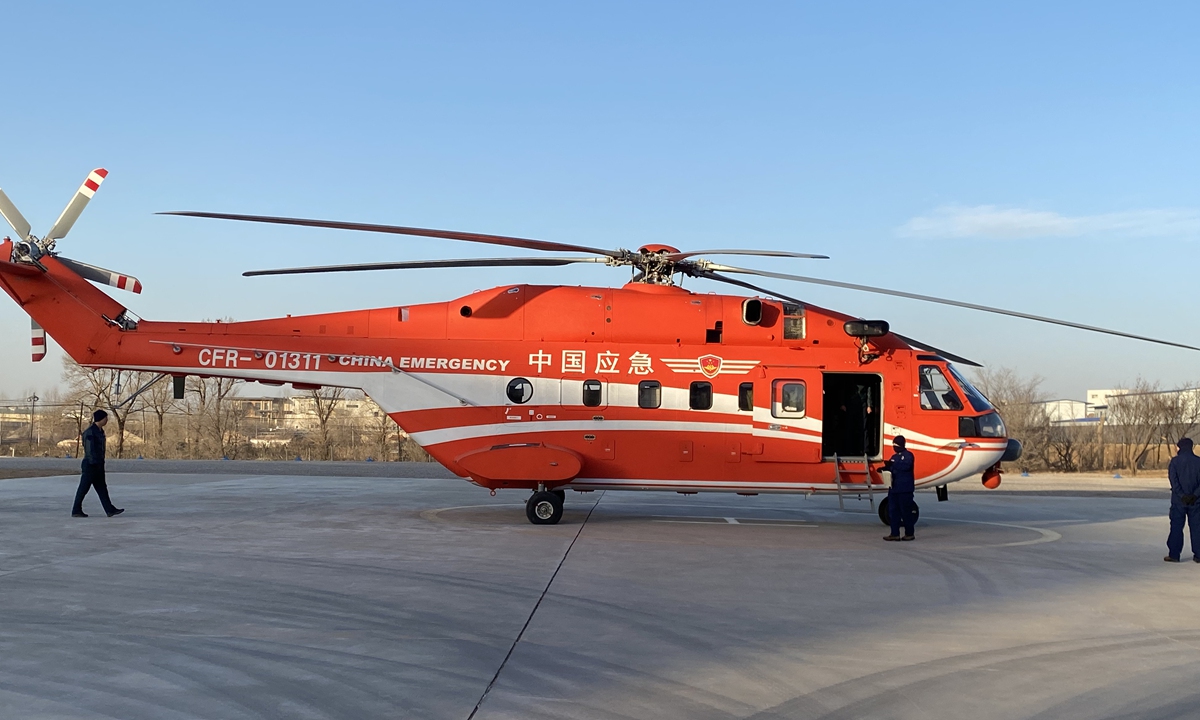
Photo: Courtesy of China Aerospace Science and Technology Corp
Aiming to provide the best emergency response service to ensure the well-being of athletes of the ongoing Beijing 2022 Winter Olympics, scientists with state-owned space giant China Aerospace Science and Technology Corp (CASC) contributed their wisdom to transform the Z-8A transport helicopter into an "ICU in the air" by equipping the aircraft with a fully domestic airborne medical care system, the Global Times learned from developers on Tuesday.
Such a system, developed by the 13th Research Institute of China Academy of Aerospace Electronics Technology of the CASC, adopts a universal modular design. The whole system integrates functions such as oxygen supply, transfusion, defibrillation and sign monitoring. It can escort two severely injured and nine lightly injured patients at the same time.
The entire module can be installed and disassembled within 30 minutes, which is suitable for multi-type helicopters, developers said.
One Z-8A helicopter with the system is in active service in the competition zone in Zhangjiakou, North China's Hebei Province, and the main service target is those who were involved in outdoor sports events on the snow.
The helicopter was developed by the Changhe Aircraft Industries Corp, a unit of the Aviation Industry Corp of China, and it has the heaviest take-off weight commissioned to the aviation rescue team in China, the company said.
The Zhangjiakou zone is home to eight competition and non-competition venues, and it is hosting two sports (skiing and biathlon), comprising 50 events in six disciplines (snowboarding, freestyle skiing, cross-country skiing, ski jumping, Nordic combined and biathlon).
With the help of an airborne system, injured athletes and personnel related to the snow events can be treated in the helicopter and can also be transferred to hospitals three to five times faster than by ground transportation, which could effectively lower the fatality rate by 40 percent, developers told the Global Times.
The biggest advantage of airborne medical rescues is speed. It is 49 kilometers from the Zhangjiakou aviation emergency rescue base to Chongli and 78 kilometers to Yanqing, but it only takes 15 minutes to reach Chongli by helicopter and less than 20 minutes to Yanqing, insiders said.
It took merely five months for the institute to design, develop and deliver the product to the user - the Daqing aviation rescue team - and the users hailed the system as quite a reassuring force for successful support during the Winter Games.
According to developers, the airborne system for the Winter Games is a modified and updated version of the previous version, which was used for forest firefighting. Due to the different application scenario, they have to overcome difficulties such as resistance to cold.
Fortunately, so far the system has not been deployed to carry out actual rescue or emergency response missions in Zhangjiakou.
For the air rescue mission during the Games, the aviation rescue team also installed the homegrown
BeiDou satellite navigation system and real-time image transmission equipment for the helicopter service, which is valuable for commanding rescue missions and tracking the flight status of the helicopter.




